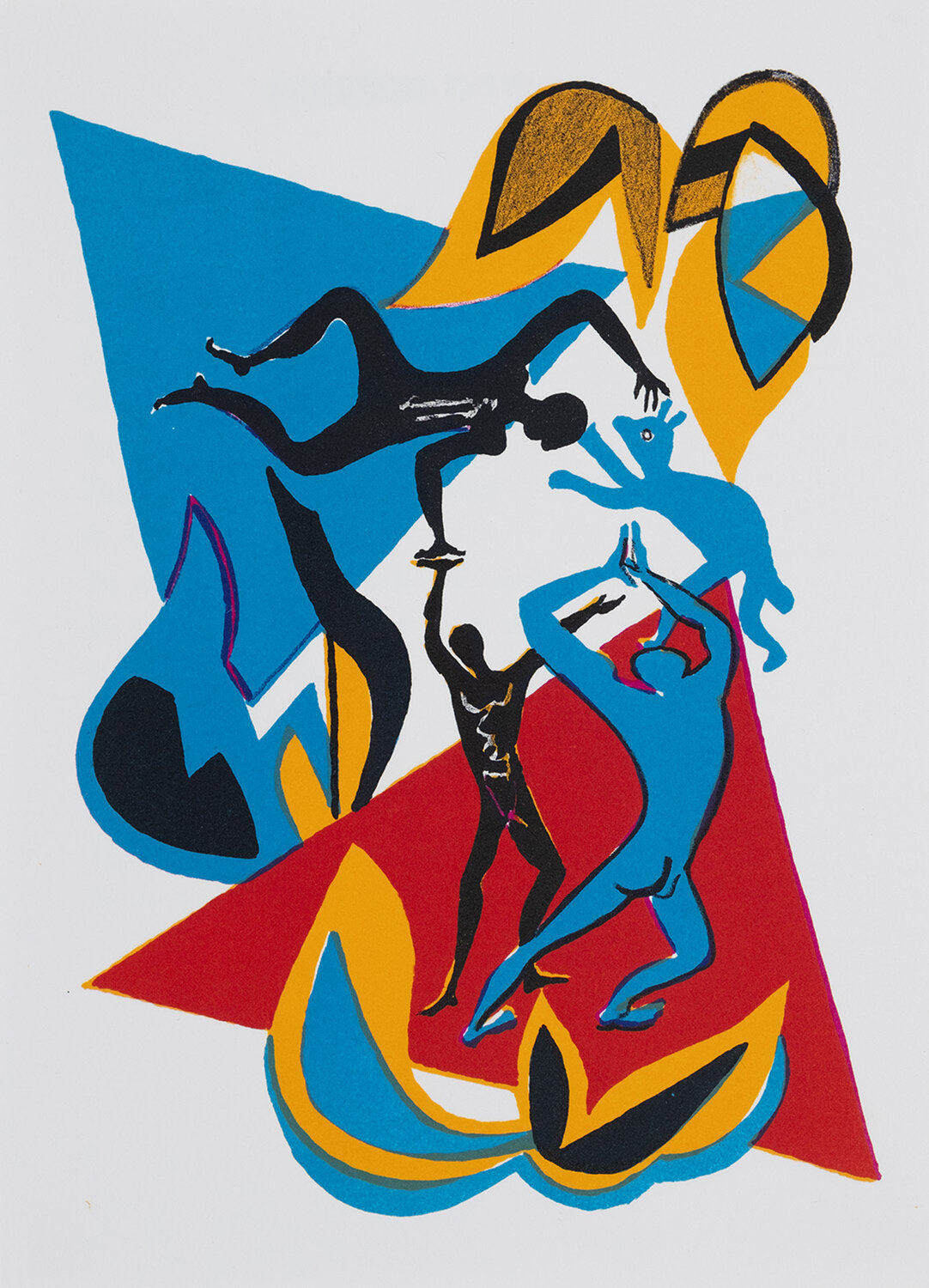Unlocking the Unconscious: An artistic revolution on view at Hofstra University Museum of Art
Dreams collide with reality and the subconscious reigns supreme. That’s the essence of the transformative approach of the avant garde artists at the forefront of the Surrealist Movement. Inspired by André Breton’s 1924 Surrealist Manifesto in France, artists, writers and filmmakers diverged from conventional thought to explore ideas such as the unconscious and the irrational.
Step into the fascinating creativity of the surrealists at Hofstra University Museum of Art’s new exhibit “Les Visionnaires: In the Modernist Spirit.” It’s a deep dive into what became a new movement that transformed how artists moved on from rigid historical styles to invent new ways to respond to their world.
The exhibit commemorates the 100th year of the Surrealist Manifesto, which forever changed artistic practice. More than 70 works from 1924 through the 1970s — sourced from the Museum’s permanent collection and the Howard L. and Muriel Weingrow Collection of Avant-Garde Art and Literature from Hofstra University Special Collections — are on view.
“The manifesto is important because artists from this time period are breaking away from the French Academy,” Alexandra Giordano, Hofstra University Museum of Art’s director and co-curator of the exhibit, explains. “It’s a concrete way to unify artists working in different styles. The manifesto really engages the unconscious mind, the importance of dreams and free association, the rejection of rational thought. It’s revolutionary because it’s really about the liberation of the imagination.”
Suddenly, artists whose work was tethered to the French Academy, established in 1635, realized that new modalities, mediums, and methodologies were a more appropriate way to respond to the rapidly changing world in which they lived. “Political, economic and cultural shifts inspired a new forward-thinking attitude in artists who, in turn, discovered radical innovations in aesthetic forms, techniques and content. Paris was the epicenter. Artists were drawn to the city, where a drive for pushing boundaries and sharing their transformative vision thrived,” Giordano explains in the forward to the exhibit catalog.
Jean Arp, Marc Chagall, Jean Cocteau, Salvador Dalí, Max Ernst and Joan Miró are among the 25 artists and writers represented here. Besides the artworks, first-edition books are on display including an original copy of the Surrealist Manifesto. Françoise Gilot, who had a tumultuous, decade-long partnership with Picasso and is the mother of two of his children, also figures prominently in the exhibit. Gilot had a close association with Hofstra and was awarded an honorary doctorate in 1982. She was an honorary conference chair of the 1985 Hofstra Cultural Center conference “Toward a Reappraisal of Modernism,” a program on avant-garde art and literature.
The Surrealist movement emerged in response to shifting political and societal landscapes.
“You had World War I and World War II that were devastating events, but at the exact same time you had Sigmund Freud’s interpretation of dreams,” Giordano says. “All of these new ideas were being explored, juxtaposed to these scary world events. Artists were responding to it all.”
Paris became a hub for artists to collaborate — sharing ideas, living spaces, lovers, and friends.
“They show us how we can work with our peers to produce something powerful,” Giordano adds. “Their partnerships and collective approach captured the realities and hopes of modern society.”
She cites Salvatore Dalí’s lithograph “Untitled from Memories of Surrealism,” (a suite of 12 prints he created in 1971 reflecting on his long artistic career) as a prime example of the movement’s significance.
“It reflects on the stream of consciousness with this out-of-body experience,” she says. “You have this large eye in the background, there’s a clock on the pupil and (in the forefront) there’s butterflies. It captures otherworldliness.”
Not only was a change of ideas happening at the time, but also a change of mediums.
“They focused on interdisciplinary vision using a lot of different materials,” Giordano says. “In addition to this dream-like quality and imagery, there is also this idea of collaboration for bookmaking, photography, collage, poetry, set design and film. These artists created these new ideas towards art, which was a deviation from the expected outcome.”
One of the ‘Les Visionnaires’ as they were known, was filmmaker and artist Jean Cocteau, who directed the 1946 adaptation of “Beauty and the Beast” (La Belle et la Bête). Based on the original fairytale with a surrealist twist, the film is a testament to bringing the traditional to reinvention. Visitors can view portions of the film throughout the exhibit.
As always, related programming enhances the exhibit. For those who want a more in-depth look, join Giordano for a guided exhibit tour and discussion, Tuesday, April 16, at 5 p.m. During the tour, as Giordano puts it, participants will learn all the “juicy tidbits.”
As Long Island’s only nationally accredited public-facing academic museum, Hofstra Museum is an important local resource.
“Our neighboring communities don’t realize that they don’t have to travel to New York City to see wonderful art, they can come here,” Giordano adds. “They can be nose-to-nose with important artists, and experience this beautiful art in their backyard.”

 44.0°,
Mostly Cloudy
44.0°,
Mostly Cloudy 




